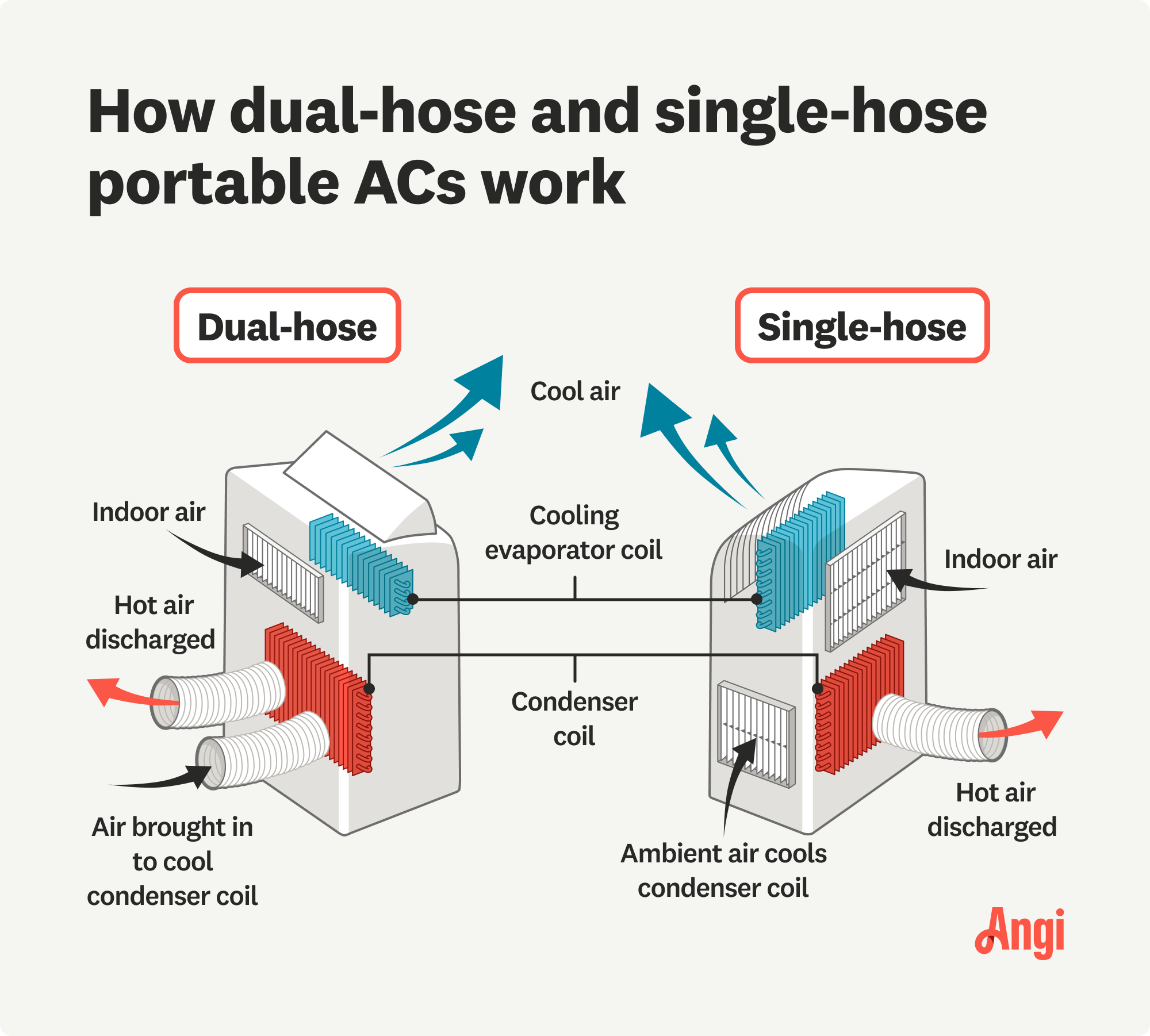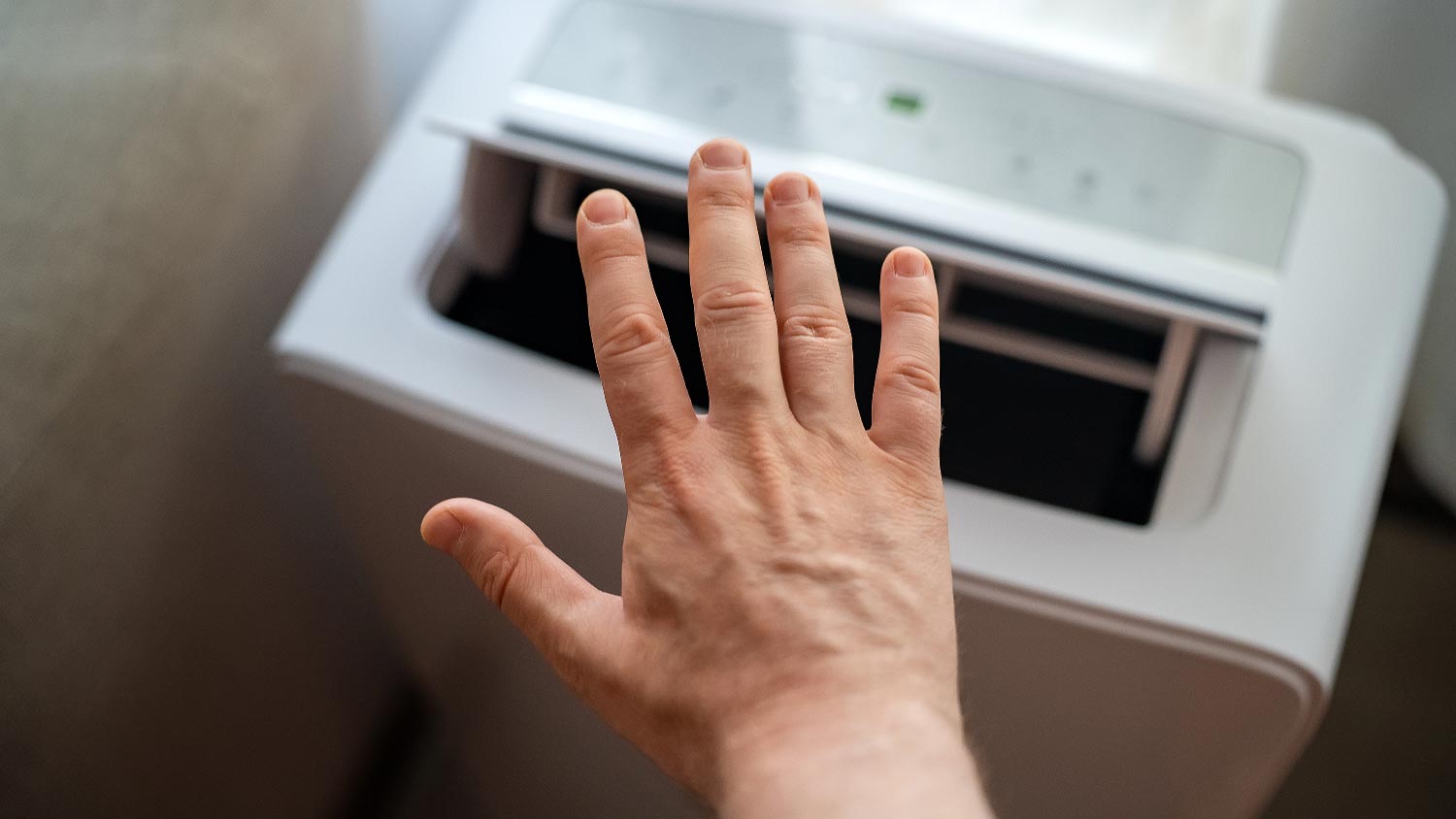
Explore how much an AC compressor costs to install based on cost factors like it’s type, brand, size, and local labor rates.
Portable ACs help you keep your cool


Portable AC units offer a flexible way to cool a room in your house, but they need to vent their exhaust in order to function properly.
Most, but not all, portable AC units are vented through a window.
Dual-hose portable AC units work better than single-hose units, but they’re more expensive.
Imagine you found your dream home, but it’s not set up for central AC. You’re not ready to commit to installing your own ductwork for a fully fledged HVAC system, and you don’t exactly love the idea of a window AC unit. Enter the portable air conditioner, which can cool just about any area that has the floor space for it (and a space to vent the unit, usually out a window). It may not be the most elegant solution, but it’s one of the most flexible. Learn how portable air conditioners work to see if they may be the solution to your AC woes.

Like other types of air conditioners, including central air and window units, portable air conditioners use refrigerant to cool the air they pull in and circulate. Hot, stagnant air travels into the unit through its intake filter by a motor and is brought into contact with the refrigerant in the evaporator coil. From there, the air travels to the compressor, where heat transfer occurs (i.e., your hot air becomes cool air). That cool air is then vented back out into the room, while the heat is vented out as exhaust through a window.
Some portable air conditioners also dehumidify the air while cooling it. If you get a dehumidifying unit, you may have to drain your portable AC every so often (and you’ll have to do it more frequently if you live in a particularly humid location). Depending on the type of unit you have, the water might drain alongside the hot air through the same exhaust channel, which means less maintenance for you.
Although they largely work using the same physics, there are a couple main types of portable air conditioning units to consider.
Single-hose portable air conditioners, as their name suggests, have a single hose through which their exhaust is vented. Warm air and moisture travel away from the unit through this hose, which most people vent out a window. Single-hose portable air conditioners tend to be more affordable than dual-hose units, and they may also use less energy. However, they’re also less efficient than their dual-hose counterparts.
Dual-hose portable air conditioners have, you guessed it, two hoses: one to vent exhaust and one to pull in fresh air from outside, which can increase the circulation of fresh air in the space you’re cooling. These may provide faster and more even cooling, but they tend to cost more to purchase and operate.
Fortunately, portable air conditioners are fairly easy to maintain. Along with draining the unit as described in its instruction manual, you’ll also need to clean the air filter regularly to ensure the unit continues to operate as efficiently as possible. (For heavy use, you may need to clean the air filter as often as once every two weeks.)
Additionally, wipe down the external grille of the unit periodically to keep it free of pet hair and other household debris that you don’t want in the air. If you plan to pack up and store your portable AC unit during the cooler months, keep it in a cool, dry area—ideally under a tarp or back in its original packaging.

We’ll be real with you: A portable air conditioner simply isn’t as efficient or effective as other climate control methods like central AC. Although they don’t block out your entire window, they still take up valuable floor space and aren’t always the nicest to look at. That said, in some homes and situations, they’re the best solution for a flexible way to keep your home at a livable temperature. This is particularly true if you don’t often need air conditioning or don’t have the budget for a brand-new HVAC system at the moment.
Have more questions? Your local AC installer can help assess your needs and find the right solution for your home and lifestyle.
From average costs to expert advice, get all the answers you need to get your job done.

Explore how much an AC compressor costs to install based on cost factors like it’s type, brand, size, and local labor rates.

Moving a furnace a few feet is not a huge matter. However, moving a furnace to another room or different part of the house will probably cost a few thousand dollars. It's a major job involving numerous different professionals.

Discover the factors affecting HVAC zoning system cost, energy savings, DIY options, and expert insights. Get informed about your home’s heating and cooling.

With so many types of furnaces out there, how do you know which one is best for you? Explore our guide to the five main types and get your home warmed up.

Having dirty evaporator and condenser coils works your HVAC system harder than it needs to. Here’s how to clean your air conditioner coils like a pro.

Thinking about installing a heat pump in your home? Learn about the different types of heat pumps and the options you can choose from in this guide.